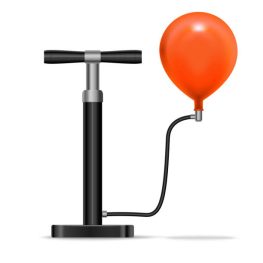| Student Manual |  Birthday parties are incomplete without balloons. Intriguingly, Michael Faraday made balloons in 1824 not for display but rather to carry out gas laws investigations. By experimenting with balloons especially in a laboratory like ours, we can learn more about the behavior of rubber-like materials. In this experiment you will investigate how the pressure within the balloon changes as the balloon is filled with air and subsequently, as it is removed. It is required to first predict, and then obtain the pressure variation inside the balloon as it happens in real time. Our data logger, the PhysLogger, and its associated pressure sensor called PhysBar allows one to achieve this. Once this pressure-time curve has been fetched, one needs to then identify the various pressure distinct regions and investigate what is happening in each of these regions. Using the reference and the accompanying explanation notes to complete this activity. In this think-aloud activity, we expect you write down your findings and musings on the balloon’s pressure in your notebooks. |
| Sample Results | The Pressure CurveProperties of rubber balloons: additional notes |
| Experiment Code | 1.34 |
| Version | January 26, 2023 |
Further Readings and References
- The pressure curve for a rubber balloonAmerican Journal of Physics, D. R. Merritt and F. Weinhaus, 46, 976, (1978).
- Of balls, bladders, and balloons: The time required to deflate an elastic sphereAmerican Journal of Physics, D. S. Lemons and T. C. Lipscombe, 89, 80, (2021).
- On the inflation of a rubber balloonThe Physics Teacher, J. Vandermarlière, 54, 566, (2016).